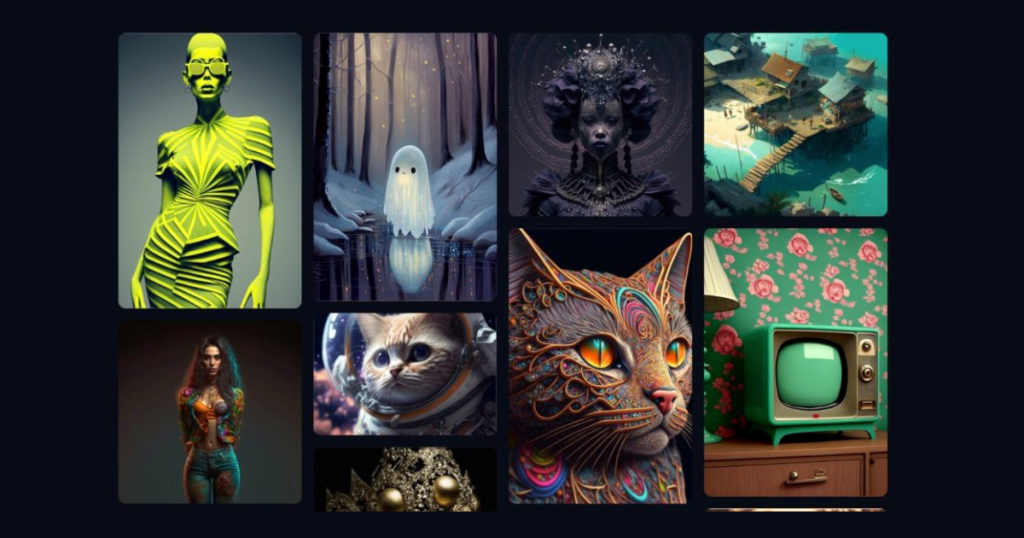The Empowering Rise of Generative Image AI As Your Modern Reading Companion
Have you ever wondered how technological advancements are reshaping our reading experience?
In the age of technological advancements, artificial intelligence (AI) has seamlessly woven itself into our daily lives, offering fascinating applications that go beyond our imagination. One such remarkable facet is the transformative power of generative image AI models to enhance our engagement with written content. Join me in this exploration of how generative image AI, as a reading companion, not only captivates our imagination but also deepens our understanding of the material.
Let’s delve into the captivating realm where technology and literature hold hands and walk together!

Generative Image AI As Your Reading Companion
1) ⚡The Blissful Marriage of Text and Imagery
Traditionally, reading has been a primarily text-based activity, relying on the reader’s imagination to conjure up mental images of the described scenes. However, generative image AI is changing this dynamic by seamlessly integrating visual elements with the text. Through the analysis of textual content, AI models like DALL-E, Midjourney and Jasper Art can generate relevant and contextually accurate images, providing readers with a visual representation that complements the written words. The transformative union between text and imagery enhances the reading experience, offering readers a harmonious blend where words and visuals dance together to create a richer and more immersive literary journey.
2) ⚡ Enhancing Comprehension and Retention
Studies have shown that the human brain processes visual information more effectively than text alone. Generative image AI leverages this cognitive tendency by creating images that align with the narrative, making it easier for readers to comprehend and retain information. Be it navigating the intricacies of historical events, unraveling complex scientific concepts, or immersing oneself in the depths of a fictional story, the inclusion of generative images elevates the entire reading experience, offering a visual tapestry that enriches and reinforces the textual journey. Furthermore, the integration of generative images facilitates understanding and leaves an indelible mark on the reader’s memory. In this dynamic interplay, the synergy of text and imagery elevates the act of reading into a comprehensive and memorable intellectual journey.
3) ⚡ Personalized Learning Journeys
Generative image AI goes beyond generic visualizations; it tailors images to suit individual learning preferences. This innovative feature empowers readers to specify their preferred visual style, prompting the AI to craft images that align precisely with their unique tastes. Beyond catering to diverse learning styles, this level of personalization establishes a profound connection between the reader and the content, fostering an immersive and tailored learning experience. As generative image AI becomes a bespoke guide in the realm of knowledge acquisition, it ushers in an era where each learning journey is as unique as the individual traversing it.
4) ⚡ Expanding Accessibility to Literature
In a transformative leap towards inclusivity, generative image AI emerges as a beacon for expanding accessibility in the field of literature. Particularly impactful for individuals struggling with learning disabilities or challenges with traditional reading methods, this innovative technology extends a helping hand. By seamlessly integrating visual cues and context into the narrative, AI-generated images become invaluable aids for those with conditions like dyslexia, ADHD, or other cognitive challenges. In this way, the union of generative image AI and literature not only breaks down barriers but also opens the doors to a more diverse and inclusive reading experience, ensuring that the beauty of storytelling is accessible to everyone, regardless of their unique learning needs.
5) ⚡ Potential Challenges and Ethical Considerations
While the integration of generative image AI into the field of reading brings numerous benefits, it also raises ethical considerations. On the positive side, these AI image generative systems enhance the reading experience by providing visual elements. However, ethical considerations arise due to the potential biases embedded in image generation algorithms. There’s a risk that these biases could reinforce stereotypes, impacting the diversity and inclusivity of the reading material. Furthermore, maintaining ethical standards requires addressing concerns related to copyright and intellectual property rights and ensuring that the AI tools respect the legal and creative aspects of content ownership. Balancing technological advancements with ethical considerations is important to create a fair and inclusive reading environment.
⚡ Conclusion
The union of generative image AI and reading opens the door to a thrilling chapter in our literary experiences. The harmonious interplay of text and visuals not only elevates our understanding and memory retention but also makes literature more accessible and engaging. As we eagerly embrace this transformative technology, it becomes crucial to address ethical considerations, ensuring that these AI companions contribute to diverse and inclusive reading journeys. The synergy between human imagination and artificial intelligence holds the promise of unlocking new dimensions in the world of literature.
So, what role do you envision for generative image AI in the evolution of literature? Share your perspectives in the comments below!

